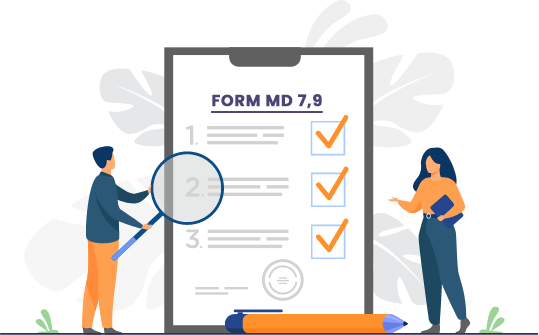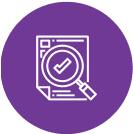Permission to Manufacture Class C & D In- Vitro Diagnostics in India - Form MD7 & MD9

At CliniExperts, our team stays updated on the latest requirements from authorities. This helps us ensure thorough documentation and timely applications and quick approvals. We provide a one-stop solution for all your IVD product needs. This includes test and manufacturing licenses, as well as post-marketing licenses.
Permission to Manufacture Class C & D In- Vitro Diagnostics(Form MD 7, 9) – Overview
For manufacturing an in-vitro diagnostic medical device (IVD) of Class C & D, a Manufacturing License must be issued. The person wanting to manufacture can apply to the Central Licensing Authority. A manufacturer has to go through an online application process under the standards laid down by the CDSCO on the SUGAM portal. The application process involves filling the application form MD-7 on the portal of the Ministry of Health and Family Welfare.
After evaluating the data, the Central Licensing Authority can accept/reject the proposal. The Manufacturing License will be granted as Form MD-9. The overall process takes about two to three months after applying. An IVD manufacturing license provides permission for IVD production intended for sale/distribution.

Who Can Apply?
Any manufacturer who wants to manufacture a Class C or Class D IVD can apply for the grant of License to manufacture for sale or distribution.

How To Apply?
The Applicant must follow the following process:
-

The application must be made under Form MD-7 to the Central Licensing Authority. The application must be filled on the SUGAM portal by uploading the listed documents and paying the stated fees.
-

After the registration, make sure you apply for the Test License Form MD-13 and performance evaluation test.

Validity
The License shall remain valid in perpetuity, unless, it has been cancelled or surrendered. Manufacturer needs to deposit the license retention fee with the CLA as specified in MDR 2017 for manufacturing site and for each licensed medical device after completion of every five years from the date of its issue.

Fee Involved
The application for approval of one site manufacturing costs about INR 50000 and INR 1000 for each specific medical device.Important Documents

A specific set of documents are required for the approval which includes:
- A Plant Master File
- The Device Master file, along with description and intended use
- The device labels and IFU
- The Quality Management System ISO 13485 certificate
- The details of the firm constitution
- The details of the manufacturing site establishment/site ownership/ tenancy agreement
Timeline to get
MD9
from Central Drugs Standard Control Organisation
2 to 3
MONTHSEssential Tips
- Before applying for manufacturing license, an applicant needs a test license to produce small quantity of IVDs for evaluation.
- The Quality Management System (QMS) should be followed concerning the rules in Fifth Schedule.
- A performance evaluation study has to be conducted in a CDSCO listed laboratory. The study reports have to be sent to the CDSCO for evaluation.
- The CLA can use the service of an expert in the field of IVD for evaluating the application of Class C or Class D medical devices.
- If the CLA founds any alteration in the application or the documents, the authority can reject the submitted application.
- The Quality Management System is a necessary aspect concerning the Fifth Schedule. If any applicant fails to comply with these standards, the application will be rejected.
Expert Advise
An applicant should ensure that Class C or D conforms to the QMS requirements stated in the Medical Devices Rules, 2017.
An applicant must apply for Test License to manufacture medical devices for test, or evaluation. This is necessary when a predicate is not available for the medical device.
An applicant has to conduct Clinical Performance Evaluation Study from a listed laboratory by CDSCO.
Related Services
SUGAM Registration- MD/ IVD
Importer | Regulatory Body: CDSCO
The registration process includes several steps to obtain approvals. The process involves registration, undertaking, and uploading the documents, complying with the given rules and regulations. We at CliniExperts, make sure that our expert team creates your registration easy and quick so that you can focus on more important aspects of your product launch...
Test license to manufacture In Vitro Diagnostics in India – MD 12 & MD 13
Manufacturers | Regulatory Body: CDSCO
Registration for in-vitro diagnostic medical devices for manufacturing can be time-consuming and tedious; we at CliniExperts will take care of all the registration procedures while you focus energies on planning your product launch. From the application process forms to undertaking a license test, we assist in every registration aspect to help you smoothly start the manufacturing process.
Import License For In-Vitro Diagnostic Kits in India – Form MD14 & MD15
Importers | Regulatory Body: CDSCO
Get Your Import License for In-Vitro Diagnostic Kits (IVD) and Medical Devices with CliniExperts. Hassle-free assistance in providing Import License of Form MD 15.
Frequently Asked Questions
Will there be a site inspection of the IVD Manufacturing site before granting the license?
Class C and Class D IVDs require inspection before the Grant of Manufacturing License.

Is it necessary to conduct PER on the test batches manufactured IVD before introducing them in the market? How many batch sample is required for PER, and where to send the batch sample?
Yes, a PER is necessary before introducing the product in the market; for conducting the PER, an applicant must obtain a License in Form MD-29 for developing three or more trial batches of the IVD product. From these batches prescribed number of sample IVD products from three consecutive batches have to be sent to NIB (NOIDA) or any other notified laboratory. The PER test should be submitted to CDSCO and the concerned State Drugs Control Authority.

What are the requirements for maintaining an IVD master file?
The applicant has to maintain the master for each medical device. A detailed outline and contents have been stated in appendix – II of the Fourth Schedule.

What is an In-Vitro Diagnostic?
In-Vitro Diagnostic devices are intended to be used outside the human or animal body. These devices aim to diagnose a disorder or medical condition in human beings or animals. Under the Drugs and Cosmetics Act, 1940, these devices are under section 3 of sub-clause (i) of clause (b). The IVD devices are updated with recent changes, as per the Drugs and Cosmetics Act, 1940 under clause (b) of sub-clause (iv).

How are IVDs classified in India under Medical Devices Rule, 2017?
Ans – IVDs are classified under Medical Devices Rules, 2017 of Chapter II, Rule 4 and sub-rule (2). The parameters of IVDs are listed under Part II of the First Schedule, which classifies IVDs as –
- Low risk – Class A
- Low risk to moderate risk – Class B
- Moderate risk to High risk – Class C
- High risk – Class D

